Mowing wet grass may seem like a harmless task, but it can lead to significant problems for both your lawn and your mower. When grass is damp, it doesn’t cut evenly, often resulting in clumps that can smother your lawn, hindering healthy growth. Additionally, wet grass increases the risk of mower damage and can lead to safety hazards such as slipping. For the best results, it’s important to wait until the grass is dry enough for mowing, ensuring a clean, even cut that promotes a healthier lawn. In this guide, we’ll explore why it’s crucial to avoid mowing wet grass and share expert tips for maintaining your yard properly.
Why You Should Avoid Mowing Wet Grass
Cutting grass during wet conditions appears beneficial at first but produces negative effects on your lawn. Wet grass blades bend downward instead of rising up straight, so mowing becomes challenging for achieving uniform and neat cuts. The uneven cutting process creates a damaged lawn appearance while making the grass tips vulnerable to diseases and pests. A wet clippings pile adheres to mower blades and undercarriage parts, causing equipment blockages alongside frustrated mowing attempts because of equipment impreciseness. The clumps that fall from your mower will create a layer that smothers the grass below while providing perfect conditions for mold and fungus growth.
Mowing grass when it is wet creates two major problems for your lawn's health and safety as well as soil conditions. The weight of your mower compresses wet soil easily because it is soft, which blocks air flow and hinders water drainage and root development, thus causing grass deterioration. Operating a mower on slippery surfaces and wet terrain heightens the danger of losing control of your machine and slipping, particularly on sloped or uneven ground. Mowing should be delayed until the grass and soil are completely dry because it ensures better lawn health and personal safety. Your lawn, together with your mower will benefit from your decision to wait for dry conditions.
Check out this detailed guide, how to winterize lawn mowers: essential tips, to avoid such issues as uneven cuts and clogged mower decks.
How to Tell If Your Lawn Is Too Wet to Mow
Mowing grass during wet conditions leads to damage of both lawn vegetation and equipment machinery. A proper assessment of lawn moisture conditions helps determine if mowing should be postponed. Several indicators will help you determine if your lawn is too wet for mowing.
Footprints Remain: Your lawn grass is too wet when your footprints remain visible after walking on it. Wet grass maintains a heavy weight that prevents it from bouncing back properly, thus creating uneven mowing patterns and compacted soil.
Mower Struggles: Your mower blades will have difficulty cutting and produce clumps of grass when the ground is too wet for mowing. Excessive moisture in the grass leads to clogged blades due to its tendency to stick to the mower system.
Soil Softness: To determine soil softness, you should push your foot lightly into the ground. The ground contains excessive moisture when you can easily sink your foot into it. Operating equipment in saturated soil can create tire marks and compact the ground surface.
Wet Grass Appearance: Mowing operations should be delayed until the grass blades become dry after they have been dew-covered or heavy with moisture. The mower will create uneven mowing patterns when operated on wet grass because the blades miss sections of the lawn.
The grass needs to dry completely before mowing because this will lead to better results and healthier lawn growth with improved mowing performance.
What Happens If You Mow Wet Grass Anyway?
Cutting grass during wet conditions appears to provide fast results yet it creates multiple negative effects. The following issues will occur when you operate your lawn mower on a wet lawn:
Damage to Grass: Wet grass tears easily instead of cutting smoothly. The resulting jagged edges from mowing wet grass increase its vulnerability to diseases and pests.
Clumping and Clogging: Wet grass clings to mower blades to form clumps that block the mower system and produce an unprofessional cut. The clumps formed by mowing wet grass will create areas of suffocation that block light and air from reaching your lawn.
Soil Compaction: Mowing grass when the soil is wet will cause ground compression that leads to soil compaction. The combination of restricted water penetration and limited root development, and reduced lawn health occurs because of wet conditions.
Uneven Cutting: Wet grass has a tendency to bend excessively during mowing operations, which produces an uneven cut pattern. The uneven length of mowed sections creates an unprofessional appearance because some areas get cut too short while others remain long.
Mower Damage: The continuous operation of mowing wet grass causes damage to your mower equipment through blade and deck accumulation of grass clippings that stress the engine.
Your lawn’s health, together with your mower’s lifespan, will benefit from waiting until the grass becomes completely dry before mowing.
Best Time to Mow After Rain
You should wait until your lawn grass becomes dry enough to prevent problems from mowing wet grass. Mowing should take place 24 to 48 hours following a rainstorm, yet this timeframe depends on soil drainage and weather conditions.
Several important elements need evaluation before making a decision.
Check for Dryness: You should check the grass for dryness by touching it and by testing whether your footprints remain shallow when you walk on it. The ground condition should be firm enough to prevent the grass from becoming soggy.
Morning or Late Afternoon: Mowing during the early morning dew hours should be avoided because the grass remains wet. The most suitable time for mowing occurs between late morning and early afternoon when sunlight has evaporated most of the moisture.
Avoid Peak Heat: Mowing during the hottest part of the day should be avoided, even though you need to wait for the grass to dry. High temperatures during mowing can cause stress to the grass. Mowing should be done during late afternoon hours because the temperatures are lower.
Permission to mow should only be granted when grass conditions are ideal because this delays operations until your lawn becomes healthier while safeguarding both grass and machinery.
Check out our guide on how to choose the perfect lawn mower can help you pick a model that's ideal for wet grass and varied weather.
Tips for Mowing Damp (Not Soaked) Grass Safely
You may need to mow damp grass under certain weather conditions, although it remains an undesirable practice. Safety precautions combined with damage-control measures become necessary when mowing damp grass.
Wait for Partial Dryness: Check that the grass moisture level is between dry and wet. Mowing grass that's wet will cause clumps to form, yet cutting dry grass produces better results.
Use a Sharp Mower Blade: A blade in good condition will cut grass effectively regardless of its moisture level. Grass blades become torn when using a dull blade because this cutting method creates jagged edges that increase disease susceptibility.
Cut the grass during the warmest period of the day: Mowing should happen during the afternoon hours after the sun has dried the morning dew from the grass. The grass will be damp enough to see your mowing lines clearly while remaining slightly wet.
Increase Mower Height: Your mower blades should be set to the highest position before cutting wet grass. The mower operates more efficiently while the grass stays intact because of this setting.
Go slow: Mowing wet grass demands extra effort, so you should move at a steady pace instead of rushing. Your mower will experience both uneven cutting and additional stress when you operate it at high speeds.
The combination of these guidelines enables safe damp grass mowing operations that protect both your lawn and your equipment.
Also, check out essential tips for extending your lawnmower battery life to keep your mower in top shape and avoid damage.
Preventive Tips to Avoid Wet Lawn Issues
Proper lawn care combined with strategic planning enables the successful prevention of wet lawn problems. The steps you take to minimize moisture accumulation will benefit your grass's health while decreasing your need to cut wet grass. The following steps serve as effective measures to prevent wet lawn conditions:
Improve Drainage: The main reason behind lawns becoming excessively wet is poor drainage conditions. Aeration of your lawn helps decrease soil density while enabling better water drainage. To enhance soil structure, you should add organic matter, while installing drainage systems becomes necessary when flooding occurs frequently.
Avoid Overwatering: The amount of water your lawn receives should be monitored, especially while using a sprinkler system. Water your lawn only when it requires hydration during early morning hours and allow the ground to become completely dry before repeating the process.
Mow Higher During Wet Seasons: Your lawn becomes more disease-resistant and stronger through higher mowing because it allows grass to grow taller during wet seasons. High grass blades create shade over the earth, which fights against soil evaporation while stimulating deep root development.
Keep Gutters and Downspouts Clear: The water from your roof should be directed into areas that prevent accumulation in low-lying spots.
Taking proactive measures allows you to avoid typical wet lawn problems while enabling better grass development and improving the performance of your mower during every season of the year.
A healthy lawn requires proper mowing timing and technique, particularly after rainfall occurs. Wet grass mowing creates multiple issues, which include poor cuts and equipment damage and compacted soil, and disease development. You can safeguard your equipment and lawn by identifying excessive wetness and waiting for suitable conditions while using proper techniques for mowing damp grass. Neat drainage systems combined with water use awareness will decrease future moisture problems in the grass. Proper lawn care at the right time allows you to achieve a healthy and even lawn despite weather conditions.
Tired of clogged mowers and messy lawns after mowing wet grass? WholeToolBox has you covered with top brands like Toro, Husqvarna, and EGO Power+, plus essential parts like mower blades, grass catcher attachments, deck kits, and mower tires. Shop now!
FAQ’S
What is the 1-3 rule for mowing grass?
The one-third rule for mowing grass means you should never remove more than one-third of the grass blade's height at any single mowing, promoting healthy growth and preventing stress.
How long should you wait to mow the lawn after it rains?
To mow the grass, you should wait at least two days for it to dry completely. If it was a light rain or morning dew, waiting 3 to 5 hours should be sufficient.
What time of day should you not mow your lawn?
Generally, anytime after 6 p.m. is too late to be cutting your grass. Of course, that time can change based on the season. Your lawn needs time to recover and heal before it gets dark and dew develops.




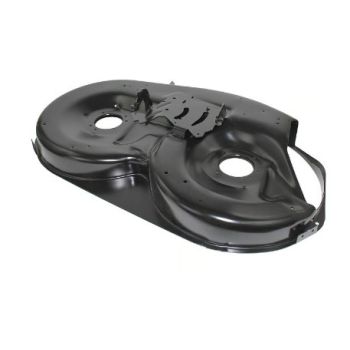
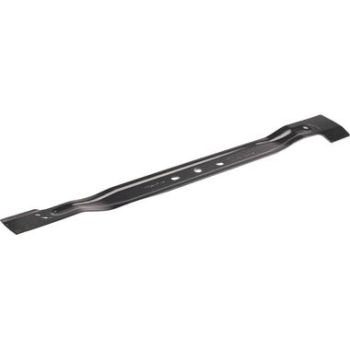
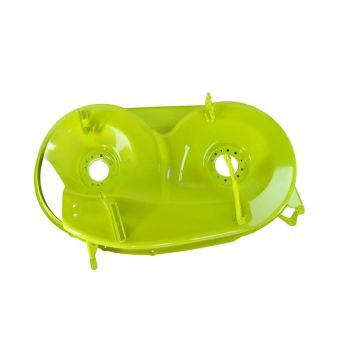
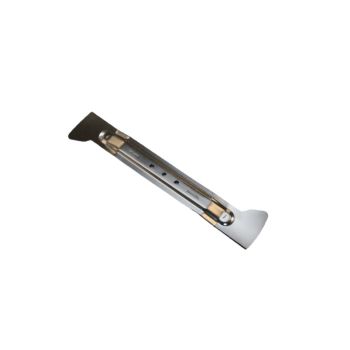
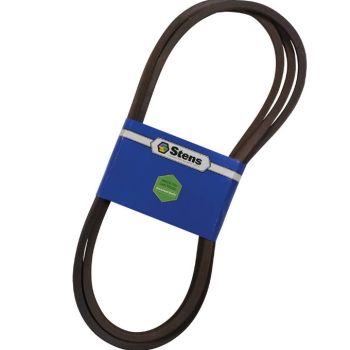
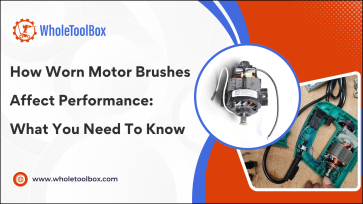
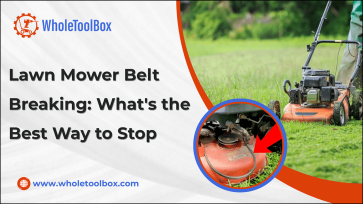



Validate your login